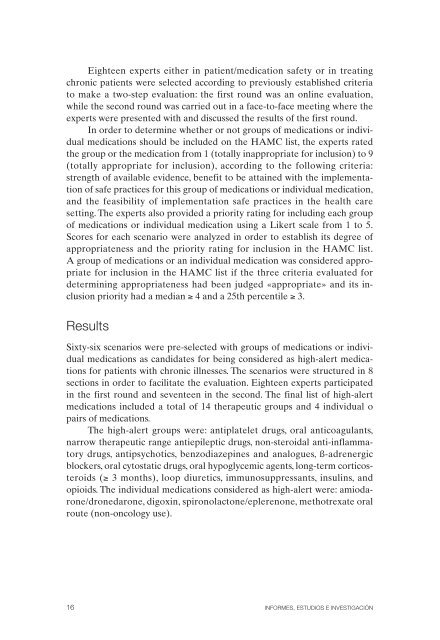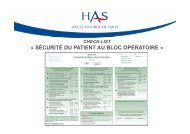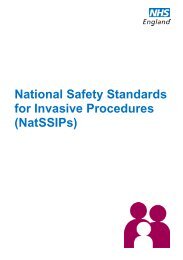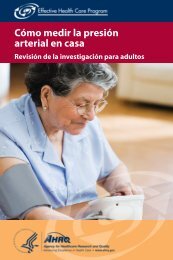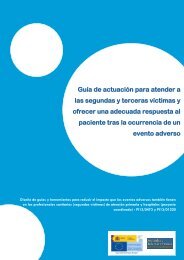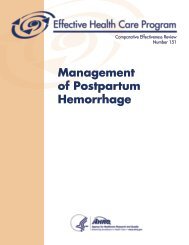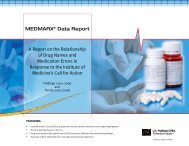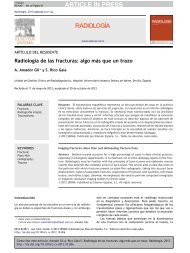Proyecto MARC
Proyecto_marc_nipo
Proyecto_marc_nipo
You also want an ePaper? Increase the reach of your titles
YUMPU automatically turns print PDFs into web optimized ePapers that Google loves.
Eighteen experts either in patient/medication safety or in treating<br />
chronic patients were selected according to previously established criteria<br />
to make a two-step evaluation: the first round was an online evaluation,<br />
while the second round was carried out in a face-to-face meeting where the<br />
experts were presented with and discussed the results of the first round.<br />
In order to determine whether or not groups of medications or individual<br />
medications should be included on the HAMC list, the experts rated<br />
the group or the medication from 1 (totally inappropriate for inclusion) to 9<br />
(totally appropriate for inclusion), according to the following criteria:<br />
strength of available evidence, benefit to be attained with the implementation<br />
of safe practices for this group of medications or individual medication,<br />
and the feasibility of implementation safe practices in the health care<br />
setting. The experts also provided a priority rating for including each group<br />
of medications or individual medication using a Likert scale from 1 to 5.<br />
Scores for each scenario were analyzed in order to establish its degree of<br />
appropriateness and the priority rating for inclusion in the HAMC list.<br />
A group of medications or an individual medication was considered appropriate<br />
for inclusion in the HAMC list if the three criteria evaluated for<br />
determining appropriateness had been judged «appropriate» and its inclusion<br />
priority had a median ≥ 4 and a 25th percentile ≥ 3.<br />
Results<br />
Sixty-six scenarios were pre-selected with groups of medications or individual<br />
medications as candidates for being considered as high-alert medications<br />
for patients with chronic illnesses. The scenarios were structured in 8<br />
sections in order to facilitate the evaluation. Eighteen experts participated<br />
in the first round and seventeen in the second. The final list of high-alert<br />
medications included a total of 14 therapeutic groups and 4 individual o<br />
pairs of medications.<br />
The high-alert groups were: antiplatelet drugs, oral anticoagulants,<br />
narrow therapeutic range antiepileptic drugs, non-steroidal anti-inflammatory<br />
drugs, antipsychotics, benzodiazepines and analogues, ß-adrenergic<br />
blockers, oral cytostatic drugs, oral hypoglycemic agents, long-term corticosteroids<br />
(≥ 3 months), loop diuretics, immunosuppressants, insulins, and<br />
opioids. The individual medications considered as high-alert were: amiodarone/dronedarone,<br />
digoxin, spironolactone/eplerenone, methotrexate oral<br />
route (non-oncology use).<br />
16<br />
INFORMES, ESTUDIOS E INVESTIGACIÓN


